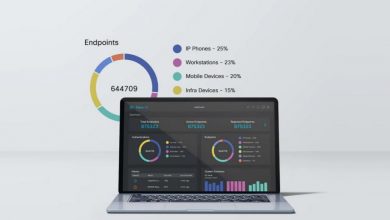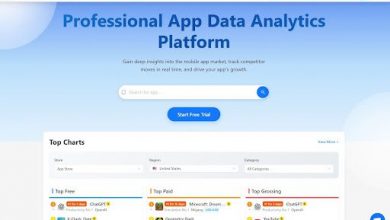Manage Your Cash Flow with Ease and Confidence

Your business turned a profit last quarter. The bank account is nearly empty. This paradox haunts thousands of Asian SMEs every month. Revenue sits locked in unpaid invoices while rent, salaries, and supplier bills demand immediate payment. Smart business owners address this timing gap through multiple strategies—from working with trusted money lenders during temporary shortfalls to implementing systems that prevent cash crunches before they start.
Why Profitable Companies Still Run Out of Money
A Singapore trading company receives a bulk order worth SGD 120,000. They purchase inventory from suppliers for SGD 75,000, paying immediately to secure wholesale pricing. The customer’s payment terms? Net 60 days.
For two months, the SGD 45,000 potential profit exists only on paper. Meanwhile, rent (SGD 8,000), salaries (SGD 18,000), and operating costs still demand payment. Without adequate working capital, they face a choice: secure bridge financing or miss obligations.
This gap defines the cash conversion cycle: days to sell inventory + days to collect receivables – days you can delay supplier payments = days you finance operations yourself. Manufacturers typically endure 60-90 days. Retailers experience 30-45 days. ACRA’s business dissolution records show cash flow mismanagement consistently appears among top failure causes, even for businesses with strong order books.
Choose Your Tracking Method
Cash flow tracking should match your business complexity. Micro-businesses (1-5 employees) need only a weekly spreadsheet: opening balance, receipts, payments, closing balance. Fifteen minutes every Monday prevents surprises.
Small businesses (6-25 employees) benefit from cloud accounting. Xero and QuickBooks integrate with Singapore banks (DBS, OCBC, UOB), automatically importing transactions. Cost: SGD 30-80 monthly. Malaysian SMEs use SQL Account and AutoCount for multi-currency support. Thailand’s businesses favor Flowaccount and Magicdee with local language integration.
Medium businesses (25+ employees) justify full ERP systems like SAP Business One at SGD 500-2,000 monthly for department-level analysis and multi-entity consolidation.
The right system is the one you actually use consistently.
Get Paid Faster: A Four-Level Strategy
Singapore B2B payment cycles average 60 days, but strategic businesses collect in 30-45.
Level 1 – Prevention: Invoice the same day work completes. Use specific due dates (“Payment due January 15”) not vague terms. Set up PayNow Corporate for instant transfers versus 3-day cheque clearing.
Level 2 – Incentivization: Early payment discounts (2% for payment within 10 days) accelerate cash by 20-30 days. Singapore’s InvoiceNow system cuts processing time by 7-10 days compared to paper invoices.
Level 3 – Restructuring: Milestone billing transforms large projects into steady cash flow. A SGD 200,000 project structured as five SGD 40,000 milestones eliminates concentrated payment risk. Construction and renovation businesses should collect 30-40% upfront, 30-40% at midpoint, final balance on completion.
Level 4 – Monetization: Invoice financing platforms like Validus Capital, CapitalMatch, and Funding Societies advance 70-90% of invoice value within 48 hours at 1.5-3% fees. A SGD 50,000 invoice becomes SGD 42,500 immediately instead of waiting 60 days.
Pay Strategically, Not Emotionally
Many owners pay bills the day they arrive. This generosity costs working capital. Suppliers offer 30-day terms expecting you to use 30 days. Paying on day 15 doesn’t make them like you more—take the full period.
Negotiate from strength with high-volume vendors. Request 45-day terms rather than 30 by framing it as operational standardization. Business credit card purchases made right after statement closing provide nearly 55 days before payment due. Singapore banks offer 0% installment plans on large purchases, preserving working capital.
Never miss deadlines—late payments destroy supplier relationships and your Credit Bureau Singapore rating. Set automated reminders 5 days before due dates. The goal is strategic timing, not delinquency.
Build Your Safety Net Gradually
The textbook advice: maintain 3-6 months of operating expenses in reserves. For a business with SGD 80,000 monthly costs, that means SGD 240,000-480,000. Most SME owners think “impossible.”
Start smaller. Month 1-3: Cover one payroll cycle (SGD 35,000 if that’s your monthly payroll). Month 4-9: Add fixed overhead—rent, utilities, insurance. Month 10-24: Reach the three-month standard by allocating 10-15% of monthly profit to reserves.
Keep reserves in separate high-yield business savings accounts (OCBC Business MaxiSave, DBS Business Multiplier offer 2.5-3.8% annually). Physical separation prevents accidental spending. Use a different bank entirely to create a genuine barrier.
Government-Backed Financing: Lower Rates, Slower Process
Asian governments offer loan programs with partial risk guarantees that reduce interest rates significantly.
Singapore – Enterprise Financing Scheme: Up to SGD 500,000 for working capital at 5-7% annually (versus 8-12% commercial rates). Government covers 70% of risk. Requires 2-3 years audited financials, 3-6 weeks processing.
Malaysia – SME Bank + CGC: Up to RM 5 million at 4.5-7% with 80% government guarantee. Priority for Bumiputera businesses and manufacturing. 4-8 weeks processing.
Thailand – SME Development Bank: Up to THB 20 million at 3-7% with 80% guarantee coverage. Focus on businesses outside Bangkok. 4-6 weeks processing.
These programs suit planned working capital strengthening, not urgent needs.
When Cash Gets Tight: Match Urgency to Solution
Need cash today: Licensed moneylenders regulated by Singapore’s Ministry of Law provide SGD 1,000-50,000 with same-day approval at 4% monthly (48% annually). Verify licensing through Registry of Moneylenders—trusted money lenders follow regulated maximum rates. Credit card cash advances cost 26-29% annually plus 6% upfront fee.
Need cash this week: Business lines of credit (DBS BusinessLine, UOB Business Credit) charge 6-8% annually on drawn amounts. Peer-to-peer platforms like Funding Societies and MoolahSense offer SGD 10,000-1,000,000 at 8-18% annually with 5-7 day approval.
Need cash this month: Asset-based lending advances 50-70% against inventory or equipment at 8-12% annually. Trade credit from suppliers (60-day terms on SGD 20,000 orders) provides interest-free financing.
Forecast to Prevent, Not Just Predict
The goal: identify problems three months before they bite you, while you still have options.
Start with Monday’s bank balance, add expected receipts, subtract planned payments, calculate projected Friday balance. Repeat for 12 weeks ahead. Takes 20 minutes weekly once established.
Create three scenarios: Conservative (80% of receipts arrive, 100% of expenses occur), Realistic (95%/95%), Optimistic (100%/90%). Make decisions using conservative forecasts. If Week 8 shows negative cash, arrange financing by Week 6.
Factor in seasonal patterns. Retail businesses experience December spikes and February slumps. Construction faces monsoon delays. Service businesses see payment slowdowns around Chinese New Year, Hari Raya, and Songkran.
Update weekly with reality. If you projected SGD 50,000 but received SGD 42,000, adjust future expectations down 10-15%. Rolling 12-week forecasts provide earlier warnings than quarterly budgets.
Systems Beat Heroics
Cash flow mastery comes from boring consistency, not brilliant interventions.
Every Monday, 9:00 AM (30 minutes): Check bank balances, review customer payments versus expectations, identify this week’s outgoing payments, update 12-week forecast, flag shortfalls in next 4 weeks.
Collection process: Day 0: Send invoice. Day 20: Reminder email. Day 35: Phone call to accounts payable. Day 45: Formal overdue notice. Day 60: Payment plan or collection service. Remove all discretion—”I don’t want to bother good customers” kills cash flow.
Automate everything: Recurring invoices for subscription customers, bank alerts when balances drop below thresholds, automatic 10% reserve transfers, payment reminders at Day 20 and Day 35.
Start With One Thing
Cash flow management sounds overwhelming. It’s not. Start with one component, master it, add the next.
If you do nothing else: Set up a 12-week cash forecast. Twenty minutes this Sunday, fifteen minutes every Monday updating it. This single action provides early warning of every problem.
If you pick two things: Add systematic invoice follow-up. Create the Day 20/35/45 reminder system.
Building a complete system: Months 1-2: Forecasting and tracking. Months 3-4: Collection processes and payment timing. Months 5-6: Reserve building and financing relationships.
The businesses that struggle treat these as projects requiring perfect execution rather than habits requiring consistent repetition. Monday morning financial reviews prevent more failures than sophisticated models. Boring consistency creates reliable cash flow.
Which one component will you implement this week?




